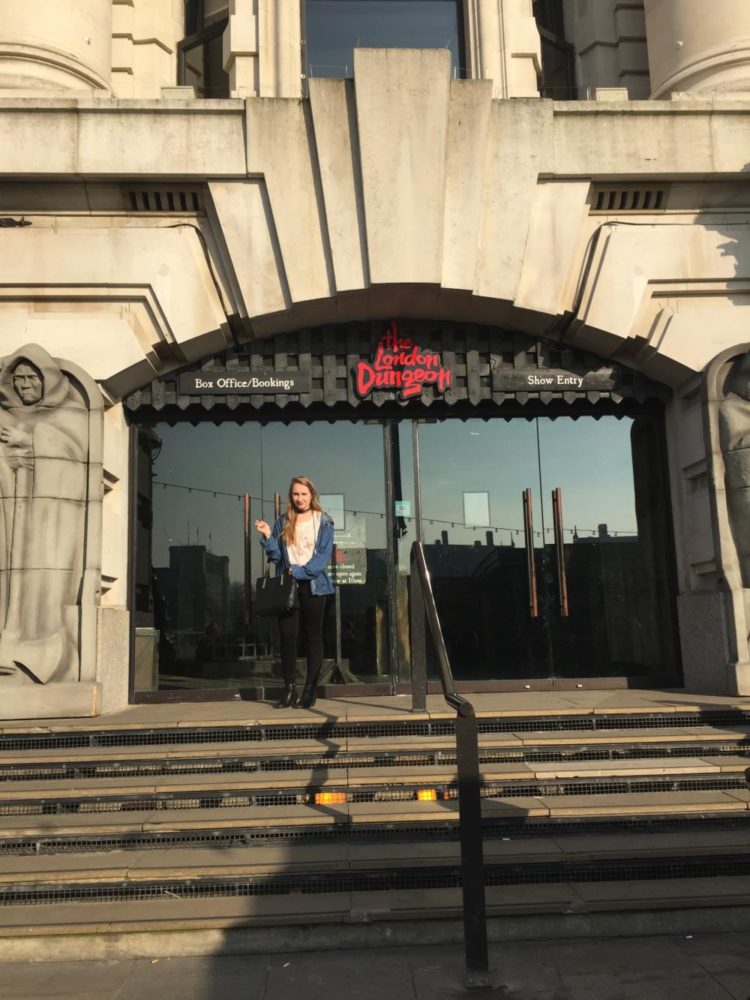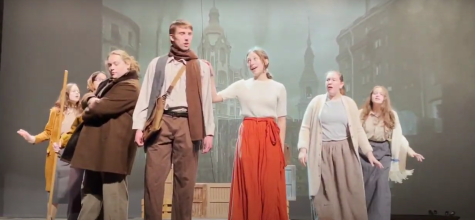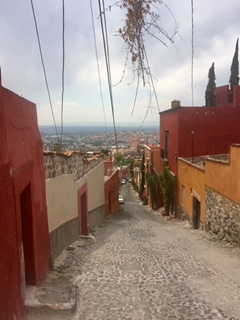Pretty Hurts
People travel to see beautiful views and new cultures. Unless they are part of a humanitarian organization or on a relief mission, people generally do not go on vacation to help the poor or look at bedraggled views. The few that do may visit the London Dungeon, Nathan Bedford Statue, Jarawa Reserve, Padaung, Lower Ninth Ward and the Dharavi Slum. These attractions are accepted as the most slipshod travel destinations because they are either racist, sexist, unethical, or disrespectful (¨Top 10 Most Controversial¨). It is distasteful to visit a site to watch people struggle. Some say by visiting these attractions it supports mistreatment in the workplace, discrimination, unwanted attention to the problems or cultures, and distasteful perception of the impoverished.
The first attraction that has been negatively narrated in the media is the London Dungeon. People generally think of the London Dungeon as an entertaining spot for families to visit while in London, but in actuality, this attraction has been stigmatized as sexist and misogynistic. London Dungeon released a series of social media posts promoting their Valentine’s Day attraction. The problem arose when the following tweet had nothing to do with the museum and was a jab at women: “I love a girl that’s a good eater. Female translation: you’re fat” (Cresci). A different attraction that is also under scrutiny is a statue in Nashville, Tenn., supporting Nathan Bedford. It is a statue of Gen. Nathaniel Bedford Forrest on his horse surrounded by a multitudinal of Confederate flags. Nathaniel Bedford was a Confederate general and was also the first national leader of the Ku Klux Klan. This symbol of hate has been shot at several times, and it was recently defaced by Black Lives Matter supporters (¨The Nathan Bedford Forrest¨). Although the figurine has been defaced and is a point of argument within the city, Bill Dorris, the landowner maintains the statue. These two destinations deal with the theme of discrimination in regard to gender and race.
An equally repugnant attraction is Jarawa tours, which have been under an increasing amount of inspection from the Indian government and press. While some argue these tours are in place to bring awareness to the Jarawa culture, many see the negatives from these inhumane tours. An article written by Gethin Chamberlain, an author for the Observer, brought international attention to the danger of human safaris on in India’s remote Andaman Islands when he published video footage of girls from the tribe being coerced into dancing semi-naked in return for food (Chamberlain). Even with all the negative attention, people still venture through the Andaman Trunk Road to enter the Jarawa Reserve. It is not just tourists that come to visit; both locals and international poachers trek through to hunt in the forest and kill the game that the tribe needs to survive. Not only are the outsiders killing the necessities the tribe needs, they have also brought in many negative substances such as alcohol, marijuana and disease. In 1999 and 2006, the Jarawa suffered outbreaks of measles – a disease that has wiped out many ethnic groups worldwide following contact with outsiders (¨Jarawa¨). The substantial hype around these tours hides the negative things existing with these tours. Another tourist attraction that has come under fire from the press recently is the Padaung Tribe Human Zoo Tours. The Padaung tribe has an ancient custom of women wearing heavy metal chains on their neck. This tradition is harmful to the women because they lose their neck muscles and cannot hold their head up straight without the chains. Although the Padaung have migrated to Thailand in only the last 10 years, they have become the most popular “attraction” for hill-tribe trekking tourists (Waddington). There are health implications for wearing these bangles, and a member of the tribe shared: “The women receive only a small percentage of the profits that are made, most of the money goes to Thai tour operators. The girls of these tribes will never have the freedom to choose not to participate in this tradition as long as tourists make it profitable (¨Thailand’s ‘Longneck’ Women¨). The ¨tour¨ is set up as a human zoo where tourists can take pictures of the women. Both these tours exploit the cultures and the members of the tribes.
A second tour that is controversial is the tours of the Lower Ninth Ward. When Hurricane Katrina plowed through in 2005, it left a ruined area known as the Lower Ninth Ward. Although this tour is a terrible attraction, Laura Paul, a 41-year-old Canadian who came as a volunteer aid worker after Katrina, runs a ¨good tour.¨ Paul runs a nonprofit organization whose volunteers rebuild homes, operate an urban farm and donates $25 per tour participant according to an article in The New York Times. However, one ¨good¨ tour does not make up for the many other tours collecting a gargantuan profit from this unfortunate situation. Motor coaches are operated by Big Easy Tours, Historic New Orleans Tours and Gray Line, offer customers an “eyewitness account of the events surrounding the most devastating natural — and man-made — disaster on American soil!” and the chance to “drive past an actual levee that ‘breached’ ” (Rich). The residents do not have issues with the tours but with the fact that people make money off of their struggles and do not give any of the profits to the community to help rebuild. Not only that but when the tourists get out of the buses, they contravene on personal property and take pictures of the residences and their homes as if they are in a zoo. Another tour that has people questioning the motivation of a company is the tour of the Dharavi Slums, as reported by PBS. The owners of Dharavi Tours stress that the money from tours goes back into the community, but a recent study found that Dharavi “has not changed as a result of slum tourism” and that proceeds from the tours almost entirely go to nonresidents (“Who Does Slum Tourism¨). One million people live in Dharavi, and the city is half the size of Central Park. The neighborhood lacks basic services like electricity and plumbing and one public toilet exists per 1,444 residents (“Who Does Slum Tourism¨). Despite these tours claiming they make charitable donations back to the community, some still question the concept of slum tourism. A 2010 article by New York Times, describes groups of tourists in Dharavi, photographing residents as if they were objects, filming people defecating outside, and even entering the home of a woman in the midst of giving birth (“Who Does Slum Tourism¨). This illustrates how the tourists do not think of these tours as showing people living through their daily struggles but instead as a form of entertainment to watch and take pictures.
Although some say visiting these attractions wrests attention to the problems or cultures, by visiting these attractions it in turn supports mistreatment in the workplace, discrimination on many levels and distasteful perception of the impoverished. Traveling should be about learning about new cultures and practices but should be gone about in a respectful way. To simply visit a destination because it is a contentious sight is a flippant mockery of the people residing there. London Dungeon, Nathan Bedford Statue, Jarawa Reserve, Padaung, Lower Ninth Ward and the Dharavi Slum all have different reasons why they are considered controversial. One fact remains the same; people should not be giving their money to companies that will take their money and not pay their employees, support a racist or sexist exhibit or promote forcing their employees to partake in something degrading and dangerous.
Cresci, Elena. “London Dungeon Deletes ‘Inappropriate’ Valentine’s Day Posts.” The Guardian, Guardian News and Media, 15 Feb. 2017, www.theguardian.com/media/2017/feb/15/london-dungeon-deletes-apologises-valentines-day-posts-branded-sexist-misogynistic. Accessed 21 Mar. 2017.
Chamberlain, Gethin. “Jarawa Tribe Now Face Sexual Abuse by Outsiders on Andaman Islands.” The Observer, Guardian News and Media, 1 Feb. 2014, www.theguardian.com/world/2014/feb/01/andaman-islands-jarawa-sex-abuse-outsiders. Accessed 10 Mar. 2017.
“Jarawa.” Jarawa – Survival International, www.survivalinternational.org/tribes/jarawa. Accessed 22 Mar. 2017.
“The Nathan Bedford Forrest Statue Vibe.” The Nathan Bedford Forrest Statue Vibe, www.vibe.com/2015/11/controversial-offensive-tourist-attractions-america-us/nathan-forrest-statue-washingtonpost/. Accessed 17 Mar. 2017.
Rich, Nathaniel. “Jungleland.” The New York Times, 24 Mar. 2012, www.nytimes.com/2012/03/25/magazine/the-lower-ninth-ward-new-orleans.html. Accessed 14 Mar. 2017.
“Thailand’s ‘Longneck’ Women, a Controversial Tourist Attraction.” CNN, travel.cnn.com/bangkok/life/gallery-thailands-longneck-women-controversial-tourist-attraction-154136/. Accessed 17 Mar. 2017.
“Top 10 Most Controversial Tourist Attractions in the World.” Top10For, 23 July 2015, top10for.com/top-10-most-controversial-tourist-attractions-in-the-world/. Accessed 21 Mar. 2017.











